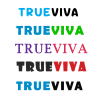How to Prevent Cross-Site Scripting (XSS) Attacks
Cross-Site Scripting (XSS) attacks remain one of the most common and dangerous security vulnerabilities on the web today. For freelance web developers and website owners, understanding how to prevent XSS is critical to safeguarding user data and maintaining trust. This comprehensive guide will explain what XSS attacks are, why they matter, and actionable strategies you can implement to protect your website effectively.
Long Description:
How to Prevent Cross-Site Scripting (XSS) Attacks – A Complete Guide for Freelancers and Developers
Cross-Site Scripting (XSS) attacks occur when malicious scripts are injected into trusted websites, targeting users by executing harmful code in their browsers. This can lead to data theft, session hijacking, defacement, and other security breaches. Freelance web developers must prioritize preventing XSS vulnerabilities to deliver secure and reliable websites.
1. Understanding Cross-Site Scripting (XSS)
XSS attacks generally come in three main types:
Stored XSS: Malicious scripts are permanently stored on the target server (e.g., in databases, comment sections) and run whenever a user accesses the infected page.
Reflected XSS: The malicious script is reflected off the webserver in an error message, search result, or any response containing some or all of the input sent to the server as part of the request.
DOM-Based XSS: The vulnerability exists in client-side scripts that manipulate the DOM (Document Object Model) without proper sanitization, enabling execution of malicious code.
Each type exploits how websites handle user inputs and outputs, making input validation and output encoding essential defenses.
2. Why XSS Prevention is Crucial
Protect User Data: XSS can steal cookies, credentials, and personal information.
Maintain Website Integrity: Prevent attackers from injecting defacing content.
Build User Trust: Users are less likely to revisit insecure websites.
Avoid Legal Consequences: Data breaches may result in penalties.
Enhance SEO Ranking: Search engines penalize compromised websites.
3. How to Detect XSS Vulnerabilities
Manual Testing: Try injecting common XSS payloads in input fields, URL parameters, and forms.
Automated Scanners: Use tools like OWASP ZAP, Burp Suite, or Acunetix to scan your website.
Code Review: Look for unsanitized user inputs and improper output handling.
Security Headers Check: Analyze HTTP headers to ensure protection mechanisms like Content Security Policy (CSP) are implemented.
4. Best Practices to Prevent XSS Attacks
a. Input Validation and Sanitization
Validate on Server and Client: Restrict input types and lengths; reject suspicious data.
Sanitize Inputs: Remove or encode potentially dangerous characters.
Whitelist Inputs: Allow only expected characters or formats (e.g., email, numbers).
b. Output Encoding
Encode data before displaying it on the webpage based on the context (HTML, JavaScript, URL).
Use functions or libraries specific to your development environment to encode output safely.
c. Implement Content Security Policy (CSP)
CSP instructs browsers to restrict sources for scripts, styles, and other resources.
This helps mitigate XSS by allowing only trusted domains to execute scripts.
d. Use HTTPOnly and Secure Cookies
Mark cookies as HTTPOnly to prevent access via JavaScript.
Use Secure flag to send cookies only over HTTPS connections.
e. Avoid Inline JavaScript and Dangerous APIs
Separate JavaScript from HTML.
Avoid using functions like
eval(),innerHTML, ordocument.write()without proper sanitization.
f. Utilize Security Libraries and Framework Features
Many modern frameworks offer built-in XSS protection—use them.
Libraries such as DOMPurify can sanitize HTML inputs safely.
5. Tools to Help Freelance Developers Prevent XSS
OWASP ZAP: Free tool to scan and find XSS vulnerabilities.
Burp Suite: Advanced security testing tool with features to detect XSS.
DOMPurify: JavaScript library to sanitize HTML and prevent DOM XSS.
Content Security Policy Generators: Tools to create effective CSP headers.
ESLint Plugins: Enforce security best practices during development.
6. Continuous Monitoring and Education
Keep your knowledge updated with OWASP resources.
Educate clients about the importance of security.
Regularly audit your websites and codebase for new vulnerabilities.
Integrate security testing in your development lifecycle.
Conclusion
Preventing Cross-Site Scripting (XSS) attacks is essential for any freelance web developer aiming to build secure and trustworthy websites. By understanding how XSS works, detecting vulnerabilities proactively, and implementing layered prevention strategies such as input sanitization, output encoding, and CSP, you can significantly reduce risks. Remember, website security is an ongoing commitment that benefits your clients, users, and your professional reputation.


 by Emily
by Emily




